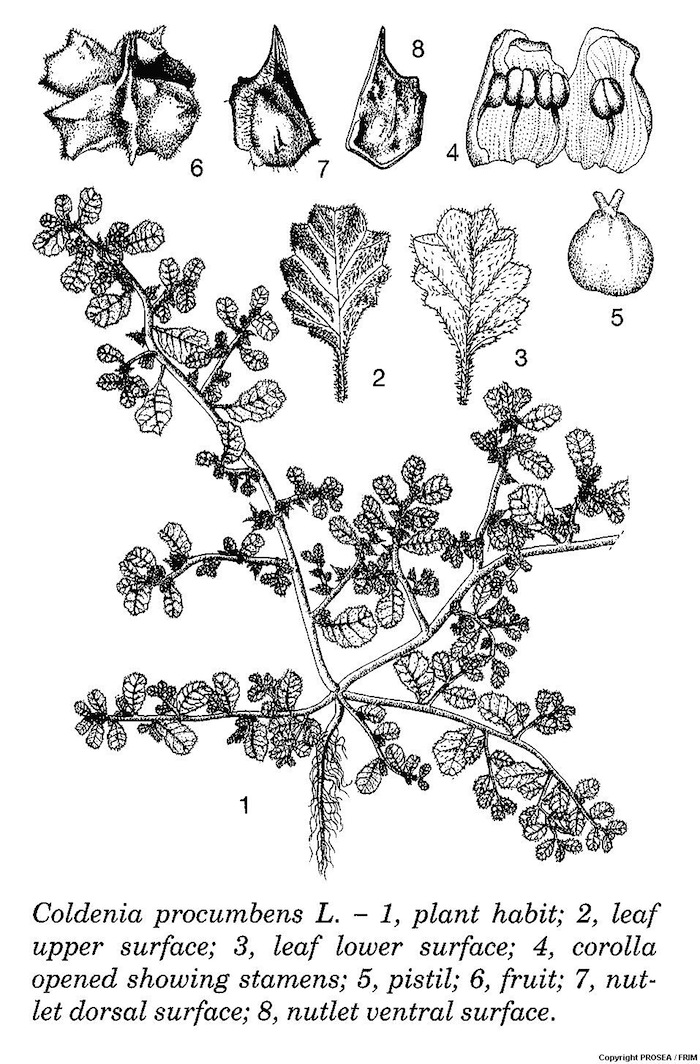Coldenia procumbens L.
Family
Boraginaceae
Synonyms
None
Vernacular Names
|
Philippines |
Tapiasin, oreganong-lalaki (Tagalog), tabatabokol (Iloko). |
|
Thailand |
Yaa teentukkae (Suphan Buri, Phitsanulok), yaa teentukto, yaa tupto (Chiang Mai). |
|
Vietnam |
C[as]p di[eef]n. |
Geographical Distributions
Coldenia procumbens is widespread in tropical and subtropical Africa, Asia and Australia. In Asia, it has been recorded from India, Sri Lanka, Burma (Myanmar), Indo-China, Taiwan, Hainan, Thailand, Peninsular Malaysia, Java, Borneo, the Philippines, the Lesser Sunda Islands, the Moluccas and New Guinea.
Description
C. procumbens is a small, annual, prostrate herb with dorsiventrally compressed, ascendingly branched stems which are up to 50 cm long and greyish hairy.
The leaves are arranged alternately, simple, asymmetric, oblong or obovate, measuring 0.5-3 cm x 0.5-1.5 cm, crenate-dentate to lobulate and with 4-6 pairs of veins which are impressed above and prominent beneath. The petiole is up to 0.5 cm long while the stipules are absent.
The flowers are arranged in between the leaves, bisexual, 4-merous, tiny and subsessile. The sepal is about 1.5 mm long and slightly accrescent in fruit. The petal is up to 2 mm long, with a cylindrical tube and diminute lobes and white. The stamens are inserted in the middle of the petal tube. The ovary is superior, glandular-villous and bifid style nearly to the base.
The fruit is divided initially into 2 halves but later each half into 2 one-seeded nutlets. The nutlets are sharply angulate ventrally and with a distinct beak. The mesocarp (middle layer of the nutlet wall) is thick and corky at the dorsal side. This enables dispersal of the nutlets by water.
Ecology / Cultivation
C. procumbens is often found in seasonally flooded locations, e.g. on dry rice fields, where it is a common weed, but it can also withstand severe drought.
Line Drawing / Photograph
References
-
Plant Resources of South-East Asia No.12(3): Medicinal and poisonous plants 3.



